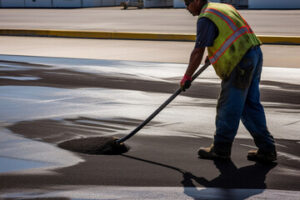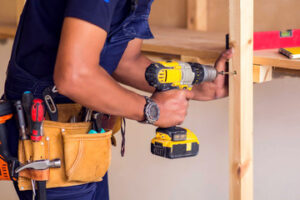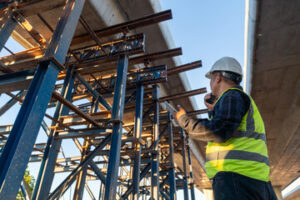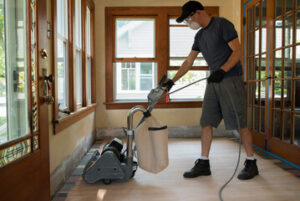Digital Bankroll Review is a system that helps you dominate for quick and easy profits online. It is a powerful system that is fueled by free traffic. The creator, Matthew Neer, is a seven-figure affiliate marketer who specializes in list building and email marketing. He also spends his free time traveling and skateboarding.
It is a done-for-you affiliate marketing business

If you are a beginner affiliate marketer, one of the main obstacles that stops you from making money online is finding and generating traffic. Digital Bankroll is a new system that claims to be able to generate quick and easy profits using 100% free traffic. It uses a creative and proven-to-work method that involves exploiting a hidden loophole in Google Trends to generate hundreds of shares, thousands of views, multiple leads, and fast sales. The system is also easy to use and provides world-class support.
The program was founded by Matthew Neer, a seven-figure affiliate marketer who specializes in email marketing and list building. He has been involved in several successful launch products, including Speed Wealth System and Income League. He grew his first business from an $8 per hour pizza delivery job to a profitable, recurring income.
Digital Bankroll is a done-for-you affiliate marketing business that teaches beginner affiliates how to promote affiliate offers through email. It was launched in 2009 as a 7-page eBook and has since grown into a full-fledged online business. The creator of the system, Matthew Neer, claims to make $10,000 a month from his email marketing program. However, it is difficult to determine if his students are actually successful because most reviews are made by affiliates who promote the product.
The Digital Bankroll program is an easy-to-use software tool that finds enormous, highly-targeted traffic for your business. It also provides world-class support and training. It is a great tool for anyone who wants to start an information product business. It teaches you how to create a high-converting sales page and how to identify the best-selling affiliate offers.
Creating an online business from scratch does not happen overnight, but with the right tools, you can make a lot of money in a short period of time. The most important thing is to find the right traffic sources and learn how to convert them into customers. The best way to do this is by implementing the strategies taught in the Digital Bankroll course. It can be hard to do, but the rewards are worth it.
It is a software tool
Digital Bankroll is a done-for-you affiliate email marketing system that claims to make $10,000 a month. The program includes an easy-to-use software tool that finds enormous, targeted traffic and provides world-class support. It also comes with a money-back guarantee and a free membership to a private forum. The program’s creator, Matthew Neer, is a well-known vendor who has released several hit products. He has over 15 years of experience in internet marketing and makes a living as an online entrepreneur.
The system teaches you how to create an online business that generates recurring income by using a simple, step-by-step method. It teaches you how to create a sales page, find the best-selling affiliate offers, and build a targeted email list. Then, you can promote your business through social media and other channels to generate a passive income.
In addition to the sales training, Digital Bankroll includes a series of webinars that teach you how to maximize profits from your business. These sessions are led by Matthew Neer, a 7-figure affiliate marketer who specializes in email marketing and has created a number of other online courses. The program is available in two versions: Silver and Gold. Both versions offer a money-back guarantee and a comprehensive library of training videos.
The program’s website claims that the system can produce high-converting sales, but it is difficult to evaluate the accuracy of these claims because most reviews are written by affiliates who earn commission from promoting the product. However, there are some independent reviewers who have tried the system and found that it is not as effective as advertised.
The program was designed by Matthew Neer, a former pizza delivery boy who now makes up to $550 per day online. He explains how he used the strategies and techniques in the Digital Bankroll system to turn his business into a profitable recurring income. He then demonstrates how to use the system by creating a video of himself playing heads-up poker at home with his laptop. He then explains how variance nearly cost him his entire bankroll and gives advice on how to avoid this situation.
It is a done-for-you email marketing business
Digital Bankroll is a done-for-you affiliate marketing business that uses email marketing to generate passive income. It is designed for beginner affiliate marketers and claims to produce high-converting sales. The system also includes an easy-to-use software tool and world-class support. The creator, Matthew Neer, has a strong reputation for creating hit products. He is a well-known vendor who has released several programs in the past, including Ripple, PinKing, Multiply, Hypnotic, and Limitless.
This system teaches you how to create a powerful online business that is 100% fueled by free traffic. It reveals a creative and proven-to-work method that generates hundreds of shares, thousands of views, multiple leads, and quick sales. It is based on a loophole in Google Trends that allows you to get unlimited traffic for your website.
You can download the program to your computer, and it will automatically find best-selling affiliate offers and send emails to your list. The program will also help you get leads by searching for the highest-converting keywords. It also allows you to filter out unwanted spammers. You can even buy email lists from the system, which are a great way to get more sales.
The program comes with a money-back guarantee, and the Gold version has additional features. The program is aimed at beginner affiliate marketers, but it also includes advanced marketing techniques. It is available for both Mac and PC computers, and the website has a mobile-friendly version as well.
The program is easy to use and is backed by a full refund policy. It is an excellent value for beginners and is a great way to learn the basics of affiliate marketing. The creator, Matthew Neer, is a seven-figure affiliate marketer and has created several successful done-for-you programs, including Speed Wealth System, List Leverage, and Viral Income League. He started out as a pizza delivery boy and now makes upwards of $550 a day. In his video, he explains how his system works and shows you how to start making money immediately. He also offers a number of different bonuses, including free access to his training and one-on-one coaching.
It is a done-for-you MLM business
One of the main challenges when starting an online business is finding enough traffic to make sales. Bankroll is a new system that claims to help people generate quick and easy profits using 100% free traffic. The system teaches users how to use a creative and proven-to-work method that can generate hundreds of shares, thousands of views, and multiple leads. It also provides an easy-to-use software tool that finds massive targeted traffic and offers world-class support.
Matthew Neer, the creator of Digital Bankroll, is a well-known vendor who has released several hit products. He has a strong reputation and a good track record of customer satisfaction. His latest product, Digital Bankroll, is a done-for-you affiliate email marketing business that includes a landing page and email list. It promises to provide a steady stream of passive income through commissions from affiliate offers. However, the system has a few drawbacks.
In his Digital Bankroll video, Matthew explains how his method works and what it takes to succeed. He also provides testimonials from real customers who have used his techniques to build their own businesses. He then outlines the exact steps you need to take to start your own successful online business. This video is a great resource for anyone who is new to affiliate marketing.
While the Digital Bankroll system is not for everyone, it is a great opportunity for beginner affiliates who are looking to earn passive income. The program is easy to use and comes with a money-back guarantee. Moreover, it is a great way to learn how to promote other people’s products and make sales. If you are serious about becoming a successful affiliate marketer, then this is definitely the right program for you. In addition, you can also get a free upgrade to Dan Ashendorf’s 12 weeks of group training with this package. Creating a profitable online business and building recurring revenue streams does not happen overnight, but it is possible to get started with this system if you follow the steps outlined in the video. You can also check out other reviews about this program to get a better idea of what it has to offer.







